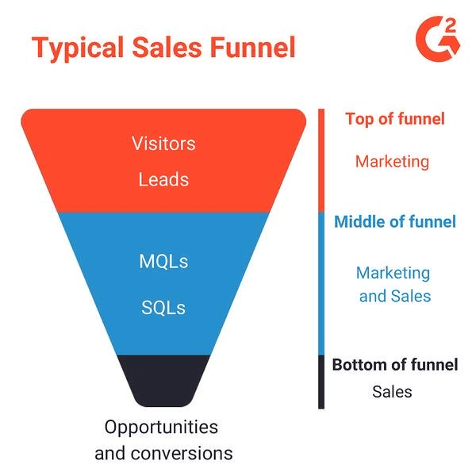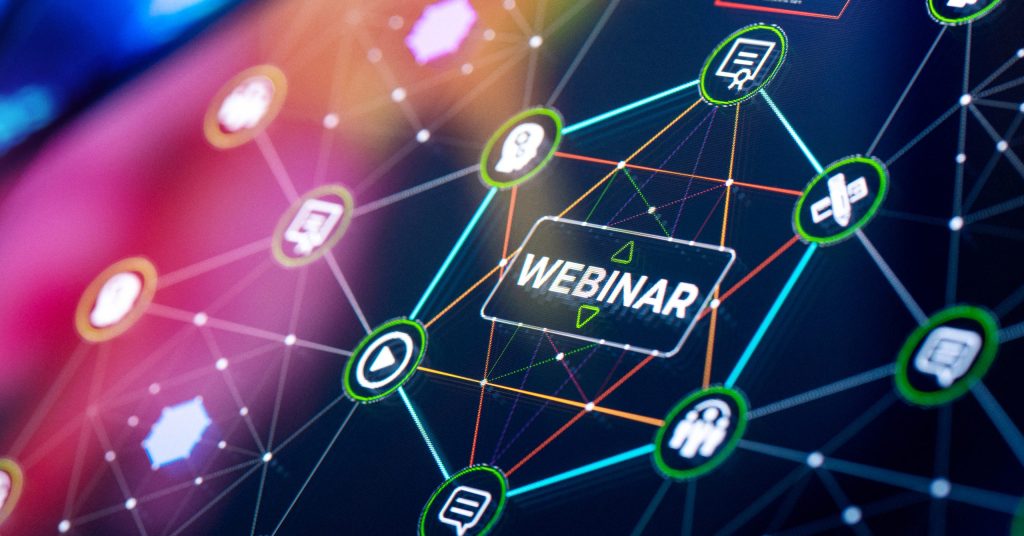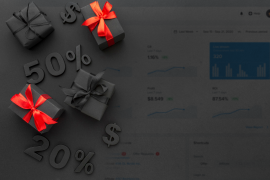Lead generation in 2022. One of the most significant changes due to the coronavirus pandemic is that personal contact in the B2B sales process has become almost impossible. And that personal contact is so incredibly important!
Table of contents
- What is a good lead?
- Inbound marketing alone does not work!
- Lead generation and qualification through the webinar
- Step 1. Determine the objective, target group, and tooling
- Step 2. Determine the subject, content, and time
- Step 3. Make a promotional plan for lead generation
- Step 4. Prepare for the webinar
- Step 5. Create engagement & interaction for lead qualification
- Step 6. Make an offer (CTA)
- Step 7. Follow-up plans with sales & marketing
Marketers are currently replacing many of these contact moments with online variants, of which the webinar is one. This is an excellent way to generate and qualify leads.
What is a good lead?
The marketing department often organizes a webinar. It takes a lot of time and effort to get participants to set up a good program and then realize the webinar well. Afterward, the participants are neatly sent a recording and slides. The list of participants is then sent to sales with the request to contact everyone. Sales, in turn, are not happy about this. It is only people who have listened to a webinar, so they are certainly not valuable leads. And they are right about that!
Inbound marketing alone does not work!
Before you start a webinar for lead generation, it is essential to coordinate with sales what the lead funnel looks like. When is a lead ready to be approached by sales? And when not yet? What role does sales play, and what role marketing? Many inbound marketers use the following method:

Image Source: https://learn.g2.com/mql
It is often assumed that marketing generates, edits (nurtured), and warms up the leads until the ‘handover‘ to sales takes place. This method often creates friction. And in practice, it often turns out that insufficient leads are generated, whereby sales indicate that the leads are also of insufficient quality.
It is better to separate lead generation, where 50% of the prospects are realized by inbound and the other 50% by sales themselves. This requires a prospecting strategy, in which each sales manager draws up a strategic account list.
You can use this list every (!) Day to prospect actively. You can contribute to this from marketing by conducting targeted campaigns on those accounts via, for example, LinkedIn or email marketing.
Lead generation and qualification through the webinar
If you then set up a lead generation campaign together, it is important to collect the right leads but also to qualify those leads during the webinar! By stimulating engagement through questions, chat, and polls, you can qualify a lead. So you use the information you collect during the webinar as the basis for the qualification. At the end of the webinar, you will then have a shortlist of hot leads that you can have sales approached, instead of a flat list of participants.
You can go through 7 steps to set up such a successful lead generation webinar.
Step 1. Determine the objective, target group, and tooling
You first determine the objective of the webinar, together with sales. Is it informative, aimed at upsell / cross-selling, generating new customer contacts, or are you actually selling something during the webinar? And who is your target audience? In B2B, you are dealing with a decision-making unit, and each person in it is interested in other topics.
An important part of step 1 is also choosing the right tooling. Not only the webinar software but also your cameras and microphone must be of good quality. Also, don’t forget that you must have a stable internet connection. My advice for tooling is: go for renowned brands that have proven themselves in practice. You only get the chance to do it right once, and then it is better to use a little extra budget for that than to go for cheap or free tools.
Step 2. Determine the subject, content, and time
The subject must appeal to the target group. If necessary, do small keyword research, view trend reports, or ask a number of people from the target group what concerns them. Only if the subject appeals to them will they click on the registration link.
When delivering content, it is wise to consider using external speakers. A customer, an independent third party, or a researcher, is often more credible.
The time is of great importance, also adjust it to your target group. Things you can take into account are, for example, time zones (if you work internationally), working days (many people are off on Wednesdays), breaks, and times when people have regular work.
Step 3. Make a promotional plan for lead generation
You want as many relevant participants as possible for your webinar. That starts with a good promotion plan. In practice, I see that it usually ends with a number of invitations to the mailing list. A nice start, but you don’t approach new people with that. Also, consider using the following:
- LinkedIn posts (by you and your colleagues + your company page)
- Sponsored LinkedIn Posts
- LinkedIn Lead ads
- Facebook Lead ads
- Remarketing aimed at visitors to your website
- Display ads
- Google Ads (in Market Audiences is a nice option)
Also, make sure that the landing page is 100% optimized. Just because someone lands on that page does not mean that he/she also registers. You have to convince them! A good framework to use for conversion strategy (for example, on your landing pages and in emails) are the six principles of persuasion. If you take this into account in all your communication, your conversion is guaranteed to be higher. You can find an explanation of these principles in the video below:
Step 4. Prepare for the webinar
One of the most important steps! You only get one moment to do it right, so do a dress rehearsal for your colleagues. With this, you test the story on the one hand, and on the other, you learn to really master the tools. How do those polls work, how do you switch between screens, who does the chat, etc.? For example, did you know that there is a delay of about 20-40 seconds between your presentation and when people actually hear that when you use GotoWebinar (when they log in via the browser, which 90% does)? Quite important if you’re doing a poll and waiting for the answers. So give that a little more time.
You learn such things by practicing a lot.
Step 5. Create engagement & interaction for lead qualification
You know, people register for a webinar with the idea, ‘I’ll listen to the recording later.’ Firstly, that happens little in practice. Secondly, the engagement is much lower because they often only scroll through the slides. It is, therefore, important to actually get people to your webinar. You can do this by building up the bond with the listener in advance.
A useful tip here is to ask people about their learning objectives during their registration. Then you approach them by email (1 to 2 weeks before the webinar) with the question if you can send them something. You then send them a nice gift (for example, we use bound notebooks with our logo).
On the printed label, we say: ‘See you next week at our webinar, where you will hear everything about it.’ This approach ensures that we have up to 70% participants, while without this approach, this was 20-40%. And yes, that costs money. But here too, I want to emphasize that you really have to take a webinar seriously and that this requires an investment.
In addition, there is interaction during the webinar. If you use chat and the polls correctly, you ensure interaction on the one hand. Listeners enjoy being involved and seeing poll results. On the other hand, you collect valuable data about the listeners. The poll, chat, and engagement data are all individually stored in the software. A gold mine to qualify later!
Step 6. Make an offer (CTA)
What do you want to achieve during the webinar? Make sure you offer a ‘ they can’t refuse ‘ offer, which supports your objective. For example, if you would like to contact a prospect, offer (in B2B) a free audit. It must actually represent value. The listener immediately sees through a fake offer.
You can also make an offer that is only valid for listeners up to 48 hours after the webinar with a specific code. The latter happens a lot in business services.
Step 7. Follow-up plans with sales & marketing
After the webinar, it actually only starts with marketing and sales. From marketing, you ensure a follow-up via email marketing. It is good to use a drip campaign. Make sure that you actually use the data you have collected before and during the webinar to personalize it. That goes so far as to send people who answered ‘A’ to a poll question a different email than people who answered differently.
The drip campaign should nurture visitors further for sales. On the other hand, with this approach, you also have direct insight into the leads’ quality, and you can (based on step 5) make a shortlist of hot leads for sales. They really need to be approached directly.
Make a plan for this in which you agree who will handle this and how this will be handled (for example, calling at least three times and emailing 4 times).
Bonus tip. Link your webinar process to your marketing automation package
If you use marketing automation, this can often be linked to the webinar software. The big advantage of this is that you can segment chat data and the answers of polls directly based on the engagement (such as participation yes/no, session duration, active/inactive). You use this to create segments based on interest.
You then use this data in your lead scoring and in the personalization of emails. So people who fall into different segments will also get different follow-up emails.
If you have also linked your CRM to your automation, the circle is complete, and you have 100% insight into the data and your ROI!
Last Updated on May 10, 2020





